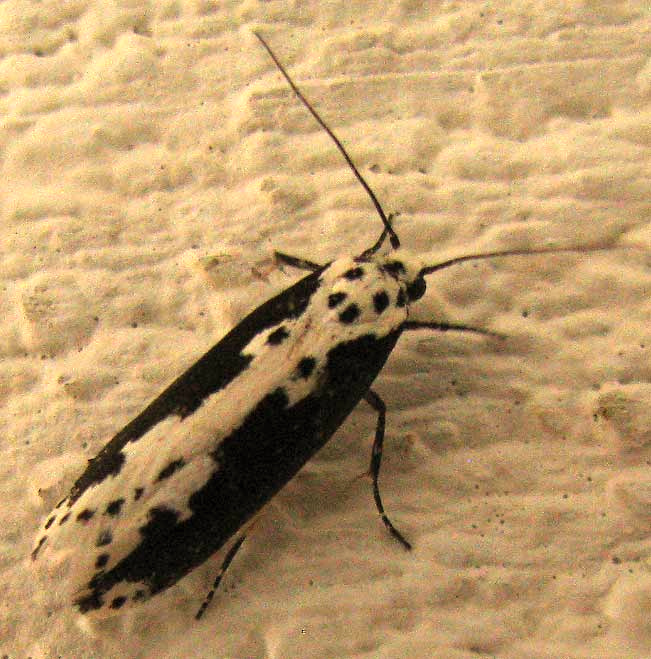Excerpts from Jim Conrad's
Naturalist Newsletter

from the April 27, 2014 Newsletter issued from the Frio Canyon Nature Education Center in the valley of the Dry Frio River in northern Uvalde County, southwestern Texas, on the southern border of the Edwards Plateau; elevation ~1750m (~5750 ft); N29.62°, W99.86°; USA
ETHMIA MOTH
These days I'm painting buildings. After scraping off old paint and caulking holes and seams, first a white primer is applied, then the final color. When the building is all white with the primer, that's when the building becomes a magnet for a certain little moth, the one shown on a freshly primed wall, at the top of this page.
It's a small moth, only about half an inch long (12mm), but with that distinct pattern of black dots on the back, volunteer identifier Bea in Ontario quickly figured out that it was an Ethmia Moth, ETHMIA SEMILUGENS, a species restricted to the arid parts of the southwestern US and the northern half of Mexico.
Not much information is available on the Internet concerning this species, other than that in California its caterpillars feed on the leaves of Phacelia wildflowers. We have two Phacelia species in our area, so it all works out.
And maybe we can add some new information here. For, as I browsed other peoples' pictures of Ethmia semilugens on the Internet, it was striking how often the moths photographed appeared on white surfaces, as in our picture. Maybe this mouth seeks out white surfaces as part of its camouflage strategy, though on a plain white surface the moth's body bears enough black spots to make it very visible. However, except on snow and white sand, expanses of white in Nature generally are broken with dark specks, blotches and cracks, and there this moth's camouflage might serve very well.